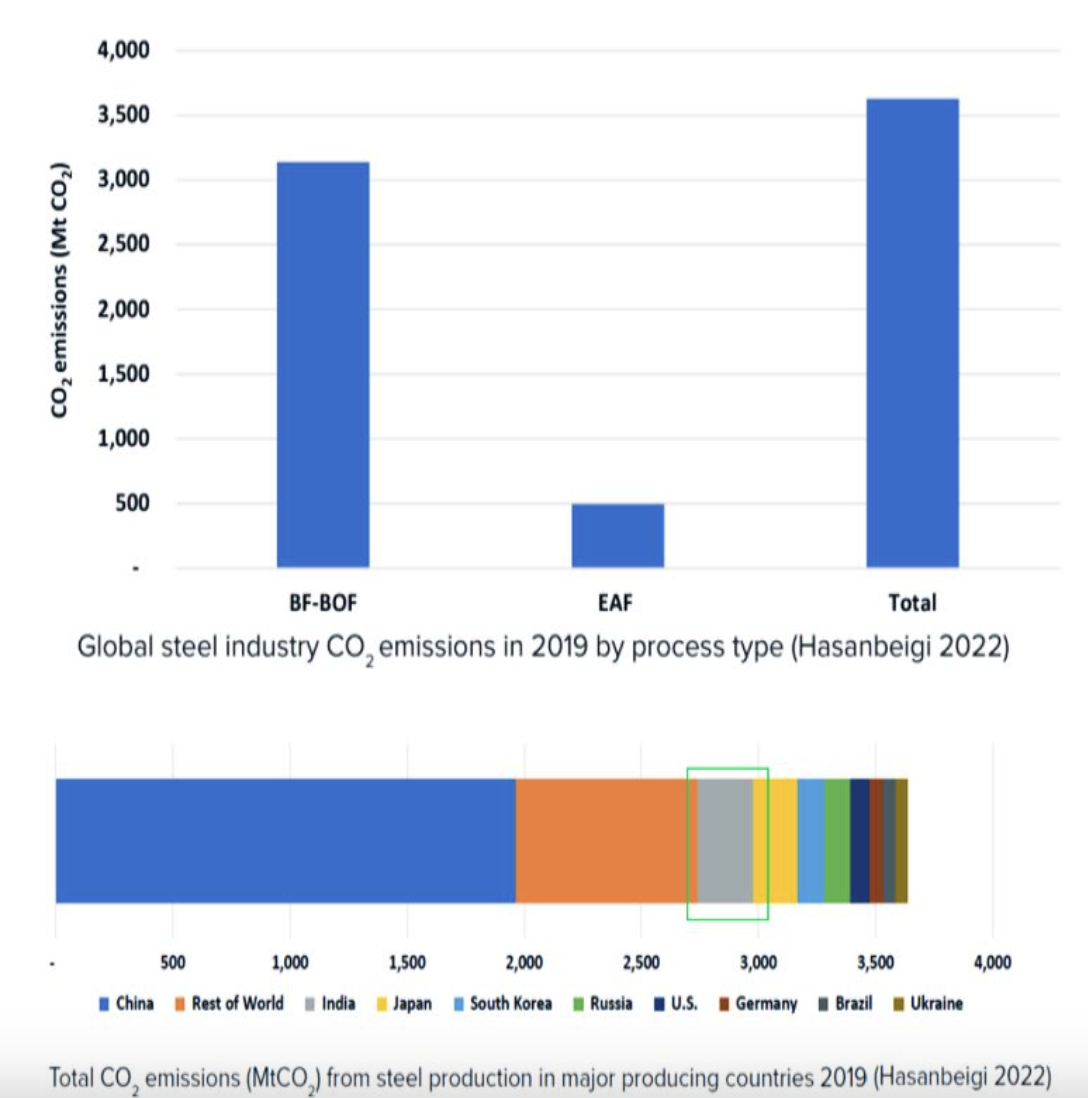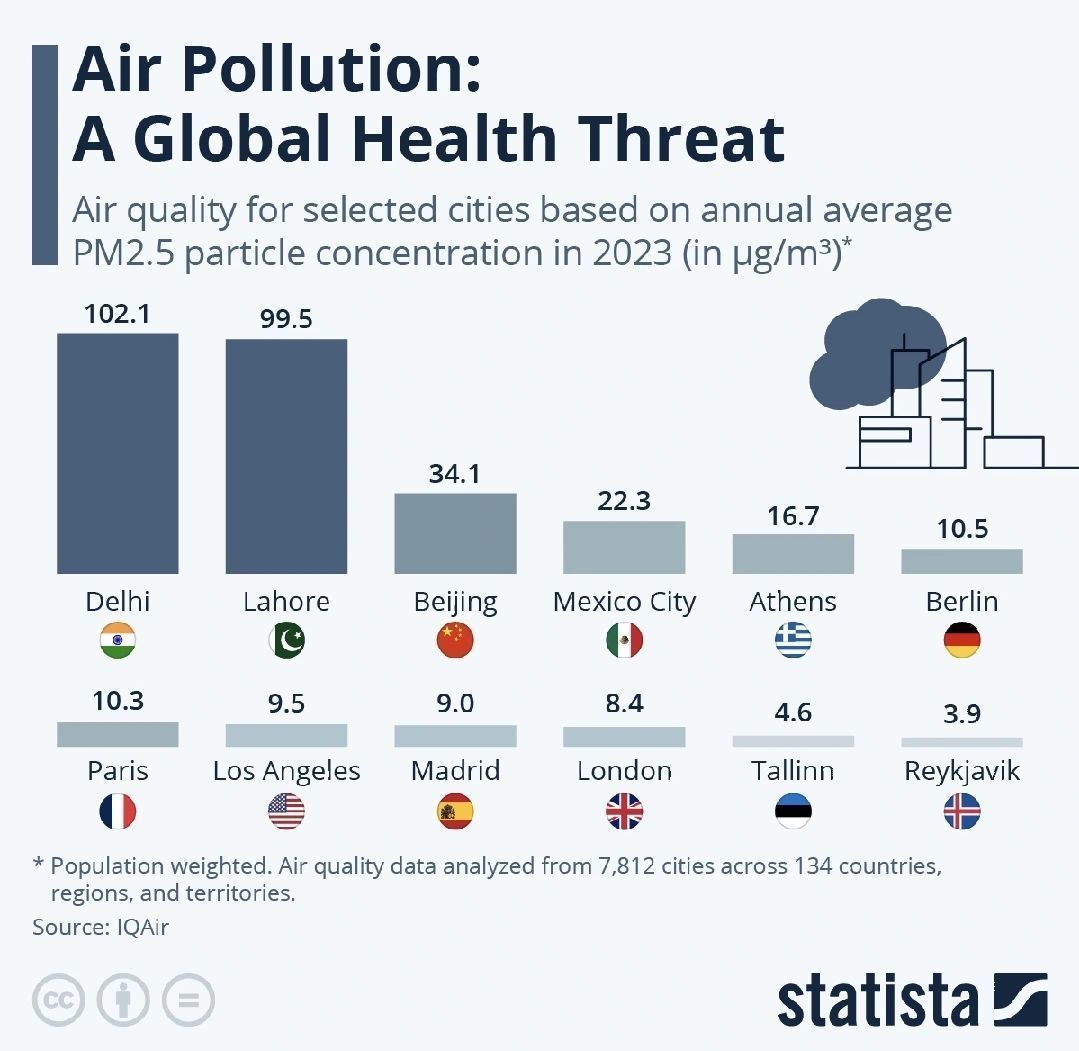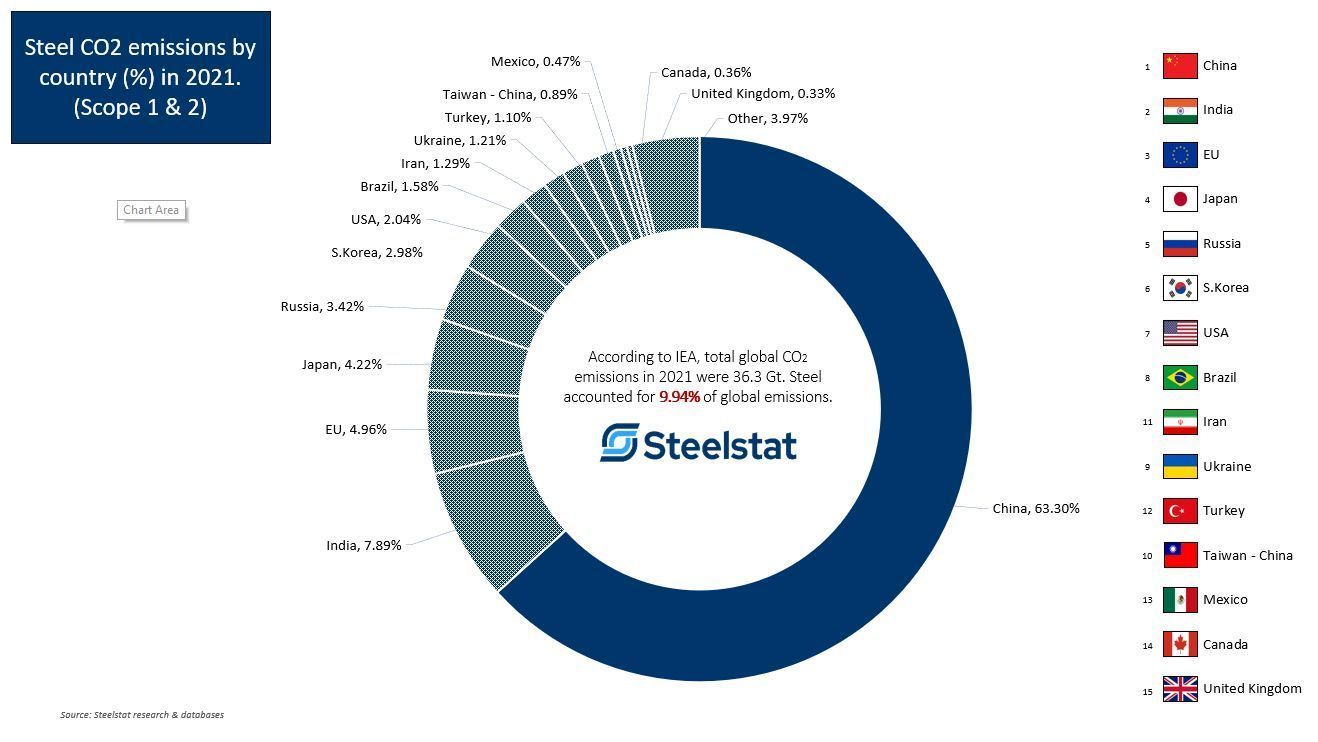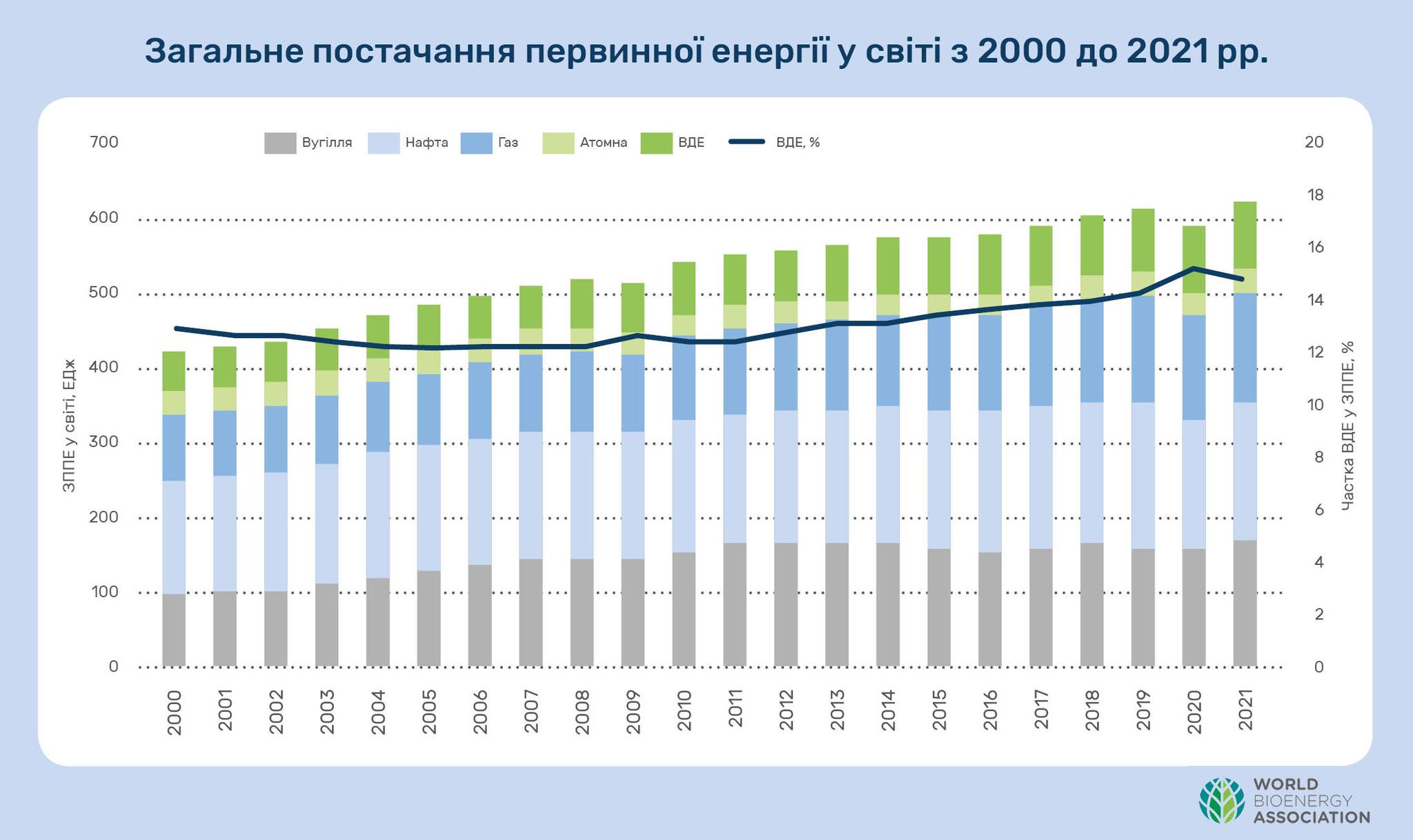The metallurgical industry creates 7% of the total volume of emissions

In 2019, the steel industry generated 3.6 Gt of CO2 emissions, a significant contributor to greenhouse gas emissions. Of these, the oxygen blast furnace alone emitted 3.1 Gt of CO2, underscoring its significant environmental impact. Although electric arc furnaces (EAFs) are considered a cleaner alternative, their CO2 intensity remains higher in China and India due to the use of pig iron or coal based on direct reduction iron (DRI) instead of steel scrap. Such dependence on carbon-intensive raw materials, unfortunately, leads to an increase in global emissions. When viewed in the context of total global greenhouse gas emissions of 52 Gt CO2 in 2019 (including non-CO2 emissions), the steel industry emerges as the main culprit, accounting for approximately 7% of total emissions . A study by Hasanbeigi (2022) estimates that China alone is responsible for a staggering 54% of CO2 emissions from the global steel industry, making it the largest polluter. These alarming statistics highlight the need for urgent action.




